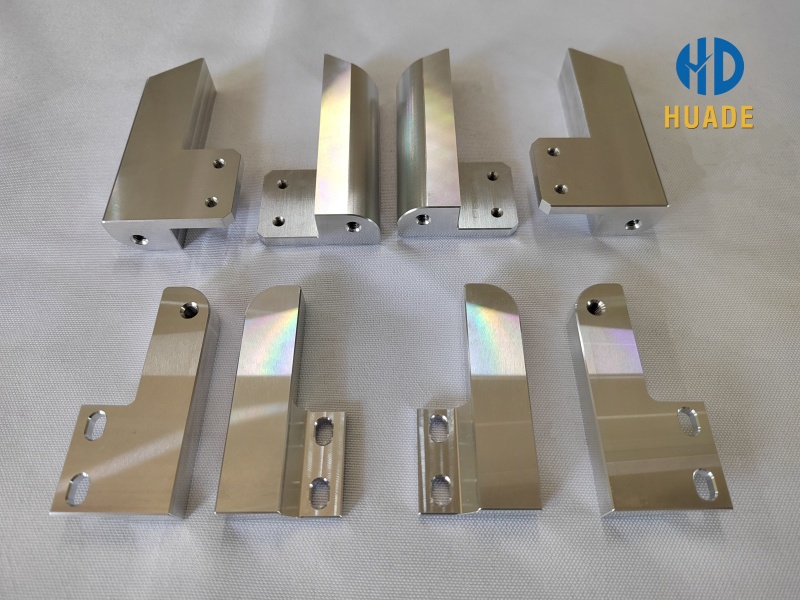Table of Contents
Aerospace prototyping plays a pivotal role in bridging the gap between conceptual designs and functional components. At Dongguan Huade Precision Manufacturing Co., Ltd., we recognize the critical need for reliable aerospace prototypes that meet stringent industry standards. This article explores aerospace prototyping services, focusing on practical approaches to enhance development processes, reduce risks, and accelerate innovation. By examining material selections, manufacturing techniques, and integration strategies, we aim to provide insights that help engineers and designers overcome common challenges in machined flight-test components.
Understanding the Fundamentals of Aerospace Prototyping
Aerospace prototyping services involves creating preliminary models of aircraft parts, satellite components, or unmanned aerial vehicle (UAV) systems to test form, fit, and function before full-scale production. Unlike general manufacturing, prototype aircraft components must withstand extreme conditions such as high altitudes, temperature fluctuations, and mechanical stresses. This demands a meticulous approach to prototyping solutions that prioritize accuracy and durability.
One key aspect is the selection of materials. Traditional metals like aluminum and titanium remain staples due to their strength-to-weight ratios, but emerging composites, including carbon fiber reinforced polymers (CFRP), offer lighter alternatives without compromising performance. For instance, in prototyping turbine blades or structural frames, engineers often opt for hybrid materials to optimize weight reduction while maintaining thermal resistance. A practical tip for readers: When evaluating prototype aircraft components manufacturing options, conduct finite element analysis (FEA) simulations early to predict material behavior under load, potentially saving up to 30% in iteration time based on industry benchmarks.
Another foundational element is the prototyping process itself. Techniques such as CNC machining, 3D printing (additive manufacturing), and injection molding each serve distinct purposes. CNC machining excels in producing high-precision flight hardware mock-ups from solid blocks, ideal for parts requiring tight tolerances like landing gear components. On the other hand, 3D printing enables rapid iteration for complex geometries, such as aerodynamic fairings, allowing teams to produce functional prototypes in days rather than weeks. By integrating these methods, aerospace prototype solutions can address scalability issues, ensuring prototypes transition smoothly to production.

Innovative Angles in Aerospace Prototyping Solutions
Beyond basics, prototyping in aerospace is witnessing shifts toward sustainability and digital integration, offering new perspectives for industry professionals. Consider the environmental impact: With global regulations pushing for greener aviation, prototyping now incorporates eco-friendly materials like bio-based resins or recycled alloys. This not only reduces carbon footprints but also aligns with certifications such as ISO 14001 for environmental management. For example, prototyping engine casings with sustainable composites can lower material waste by 20-25%, as these allow for precise layering without excess trimming.
A subdivided focus on digital twins represents another fresh angle. In aerospace prototype engineering, creating a virtual replica of the physical prototype enables real-time simulations and predictive maintenance. This solution minimizes physical testing needs, cutting costs and time. Engineers can use software like Siemens NX or Autodesk Fusion 360 to model aerospace prototypes, iterating designs virtually before committing to manufacturing. A case in point: During UAV development, digital twins help optimize propeller designs for noise reduction, a critical factor in urban air mobility applications.
Furthermore, supply chain resilience has become a subdivided concern in aerospace prototyping services. Post-pandemic disruptions highlighted the need for localized manufacturing hubs. Companies can benefit from partnering with precision manufacturers in regions like Dongguan, China, where access to advanced tooling and skilled labor supports agile prototyping. This approach mitigates delays, ensuring prototypes are delivered within tight timelines—often under 4-6 weeks for custom orders.
Challenges and Mitigation Strategies in Aerospace Prototypes
No discussion of prototype aircraft components is complete without addressing hurdles. Dimensional accuracy remains a top challenge, as even minor deviations can lead to catastrophic failures in flight tests. To counter this, advanced metrology tools like coordinate measuring machines (CMM) and laser scanning are essential in verifying prototypes against CAD models. Readers might find value in adopting a layered quality control process: Start with in-process inspections during machining, followed by post-production validation, to achieve tolerances as fine as ±0.005 mm.
Cost management is another subdivided issue. High-fidelity prototype in aerospace can be expensive due to specialized materials and equipment. Mitigation involves hybrid prototyping—combining low-cost 3D printed molds with traditional casting for complex parts. This not only reduces expenses by 15-40% but also accelerates the feedback loop from design to testing.
Regulatory compliance adds complexity, particularly for prototypes destined for FAA or EASA certification. Aerospace prototyping solutions should incorporate traceability from the outset, documenting every material batch and process step. A proactive strategy: Embed RFID tags in prototypes for real-time tracking, facilitating audits and ensuring adherence to standards like AS9100 for aerospace quality management.
Case Studies: Real-World Applications of Aerospace Prototyping
To illustrate these concepts, let’s examine practical applications. In satellite component prototyping, precision is paramount for antenna arrays that must endure space vacuum and radiation. Using vacuum forming and CNC milling, engineers create prototypes that simulate orbital conditions, allowing for thermal vacuum testing. This approach has enabled faster iterations, reducing development cycles from months to weeks in some projects.
For aircraft interiors, prototype in aerospace focus on ergonomics and safety. Prototyping seat frames with lightweight foams and alloys helps evaluate crashworthiness through drop tests. An innovative angle here is incorporating haptic feedback sensors in prototypes to gather user data during simulations, refining designs for passenger comfort.
In UAV systems, rapid prototyping solutions shine. Electric vertical takeoff and landing (eVTOL) vehicles require agile development; 3D printed prototypes allow for quick aerodynamic tweaks, optimizing lift-to-drag ratios. By analyzing wind tunnel data from these prototypes, teams can achieve up to 10% efficiency gains in battery usage.
Future Trends in Aerospace Prototype Development
Looking ahead, aerospace prototype manufacturing is poised for transformation through AI and automation. Machine learning algorithms can predict prototype failures by analyzing historical data, enhancing reliability. Additionally, collaborative platforms enable global teams to co-design prototypes in real-time, fostering innovation across borders.
Sustainability will continue to drive solutions, with biodegradable materials entering the prototyping phase for non-structural parts. As electric propulsion gains traction, prototypes for battery enclosures will emphasize thermal management, using phase-change materials to dissipate heat effectively.
In summary, aerospace prototyping services offer a pathway to more efficient, reliable, and innovative aerospace development. By focusing on material innovation, digital tools, and strategic mitigation, professionals can overcome challenges and deliver value in this demanding sector. At Dongguan Huade Precision Manufacturing Co., Ltd., we continue to explore these avenues to support the industry’s progress. For detailed specifications or inquiries on prototype services for aerospace, feel free to get in touch with us.
